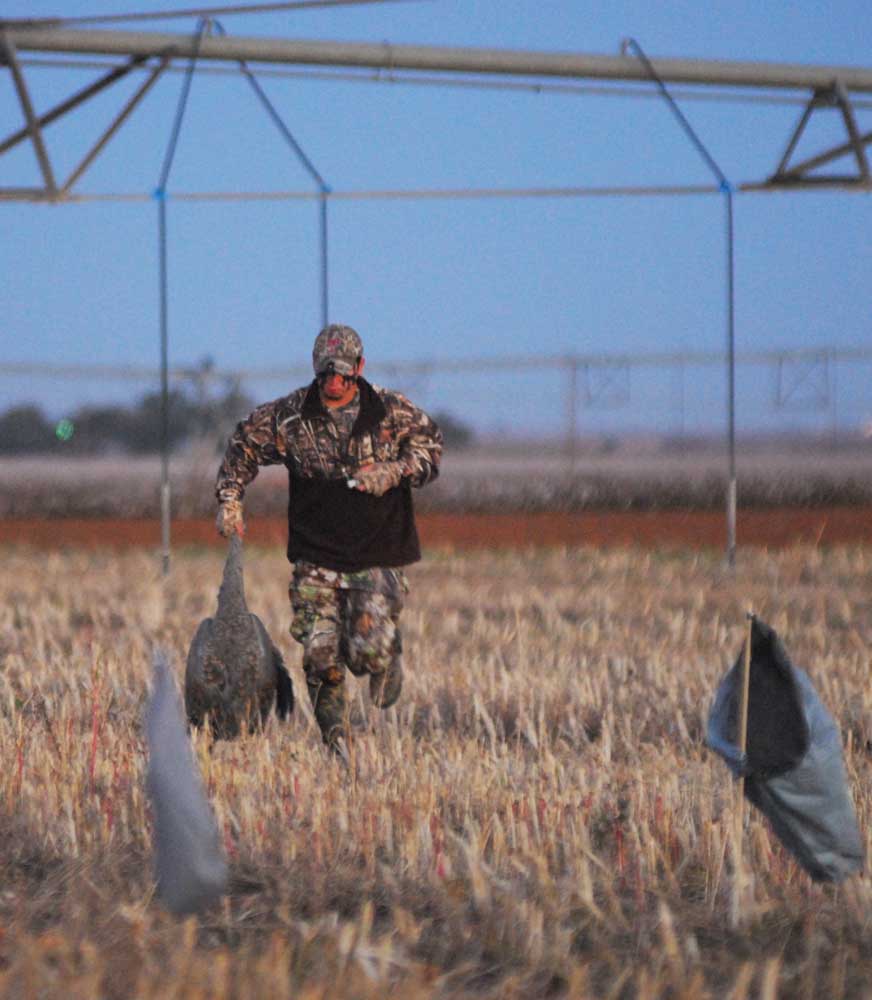Texas’ Other Crane: Interest In Hunting Sandhill Cranes Is On An Upswing
Published 11:18 pm Friday, December 6, 2019

- Although they do not attract as many hunters as ducks and geese, sandhill crane hunting is popular. An estimated 800,000 of the birds are expected to have migrated into Texas this year.
Hunting guide Daniel Cerretani and I were walking in front of the lodge at Hidden Lakes Hunting Resort outside Yantis recently and he said there was a flock of sandhill cranes passing over an adjoining pasture.
I looked up and saw the birds he was talking about, and my first thought was he was crazy. They were big birds, but in the gray afternoon sky I could not make out any color and, more importantly, I could not hear the distinctive call the cranes make.
Trending
I have hunted sandhills in the Panhandle and seen them on the coast. I have seen or heard the birds migrating over other parts of the state, but in almost 50 years in East Texas I have never seen them here. Thinking back, I remember times I thought I heard some, but I attributed that to simply misidentification.
It seems I was wrong.
“It’s not unusual for sandhills to migrate over East Texas, though that’s the eastern fringe of the migratory corridor,” said Owen Fitzsimmons, Texas Parks and Wildlife Department’s webless migratory game bird program leader. “I remember hearing and seeing them come over where I grew up near Lake O’ the Pines every year right around the start of deer season, so it seems they’re right on schedule this year. Most of those birds are probably heading to the middle or upper Texas coast.”
Sandhills are fascinating. Looking at one up close, it is hard to believe it can fly. They stand up to 4 feet tall with a 6 1/2 foot-wing span and can weigh up to 10 pounds. Hunting them in the Panhandle is something akin to hunting geese in wheat fields. Hunters have discovered that the dark meat breasts are excellent table fare.
Able to live upwards of 30 years, sandhill cranes are a unique bird that nest from Canada to Siberia before coming south as far as the Texas coast to winter.
“The cranes found in the Central Flyway are known as the Mid-Continent population and make up the largest population in North America,” explained Fitzsimmons. “Other hunted populations include Rocky Mountain, Lower Colorado River Valley, and an Eastern population.”
Trending
Sandhill cranes and whooping cranes look similar, except sandhills are grey. They overlap in nesting and wintering grounds, but that is where the comparisons end. Whooping crane numbers have climbed from 21 in 1941 to about 800 last year. In comparison, the Mid-Continent population alone reached a record million-plus in 2018 and is estimated just under a million this year. Those numbers are well above the previous five-year average of 570,000. Some of that increase is due to improved survey techniques, but shows the population is healthy.
Texas attracts about 75 percent of the ducks funneling down the Central Flyway. The biologist said an even greater percentage of cranes come to Texas.
“Around 80 to 90 percent of the Mid-Continent population cranes winter in Texas, and most of those are found in the southern High Plains/Panhandle area,” Fitzsimmons said. “The Texas Gulf Coast supports a smaller proportion of cranes, somewhere around 100,000-120,000. A smaller proportion of MCP cranes are also found in southern New Mexico, southeastern Arizona, and north-central Mexico,”
Because of a growing interest in waterfowl hunting in the High Plains and the Panhandle the interest in crane hunting is growing in Texas. About 30,000 federal crane permits, free but mandatory for hunters, are issued in Texas. However, surveys indicate the actual number of hunters is closer to 9,000.
“Texas has by far the highest number of crane hunters and harvest in the U.S., making up about 70 percent of the U.S. totals. Harvest was estimated at 22,526 in the 2018 season, the highest on record,” Fitzsimmons said.
Although they roost in and around playas and often fly out to wheat fields with geese to feed, sandhills are not waterfowl when it comes to regulations. Hunters can use lead shot and often use buckshot to bring down the high-flying birds. The daily limit is two along the coast and three in the remainder of the state.
“It seems there is a growing interest in crane hunting throughout the flyway, and with that you’re seeing improvements in equipment, decoys, hunting techniques, etc.,” Fitzsimmons said. “It seems like there are more outfitters specializing in crane hunting these days, too.”
Probably the biggest holdback to crane hunting is the limit. Hunters are allowed three daily in Zone A covering most of western Texas and the Panhandle, and in Zone B in North Central Texas. The limit is two in Zone C along the Texas coast. However, each breast, the only really edible part of the crane, makes a number of steaks perfect for chicken-fried steak.
The season closes Jan. 19 in the coastal zone and Jan. 26 in the other two Texas zones.



